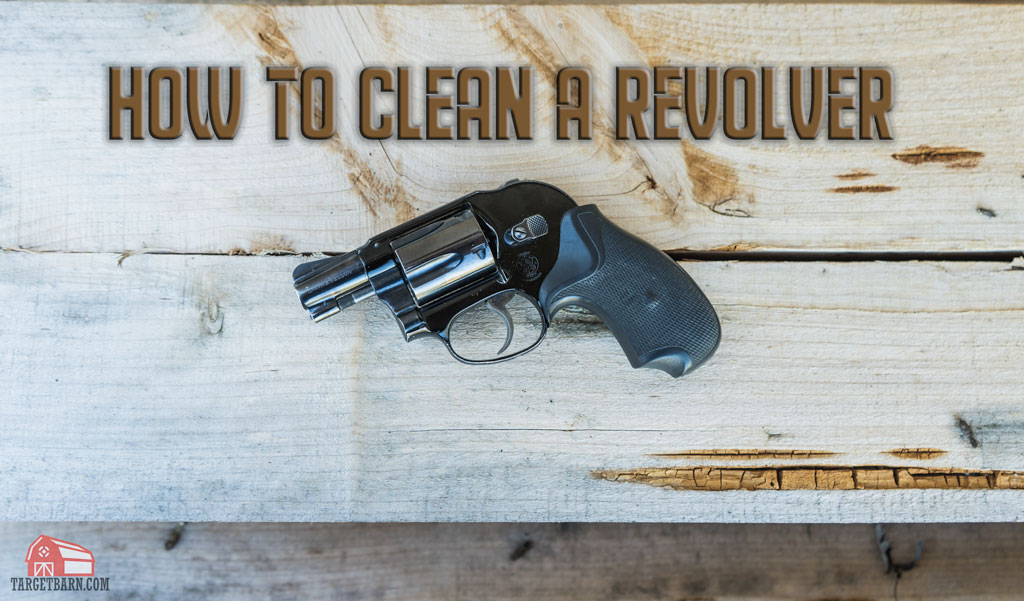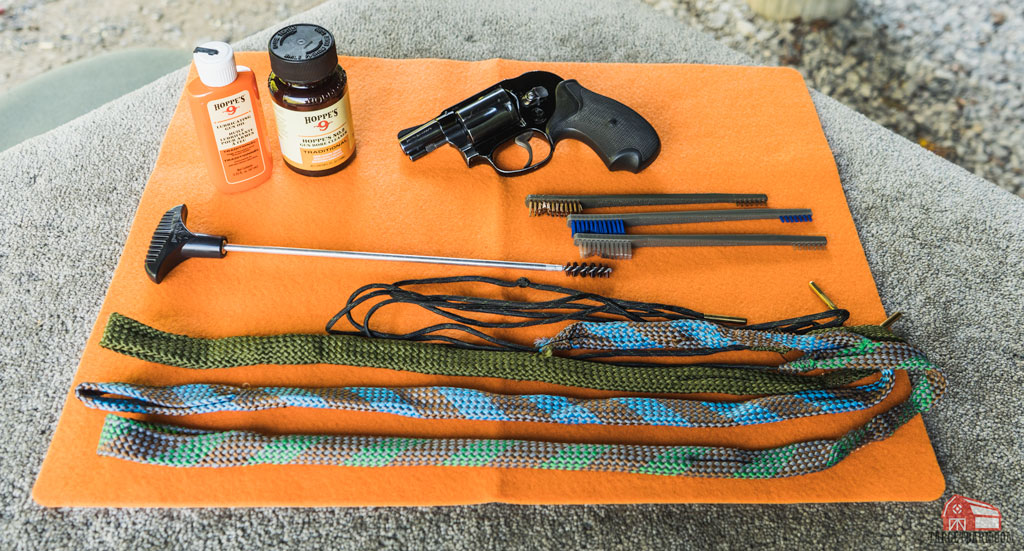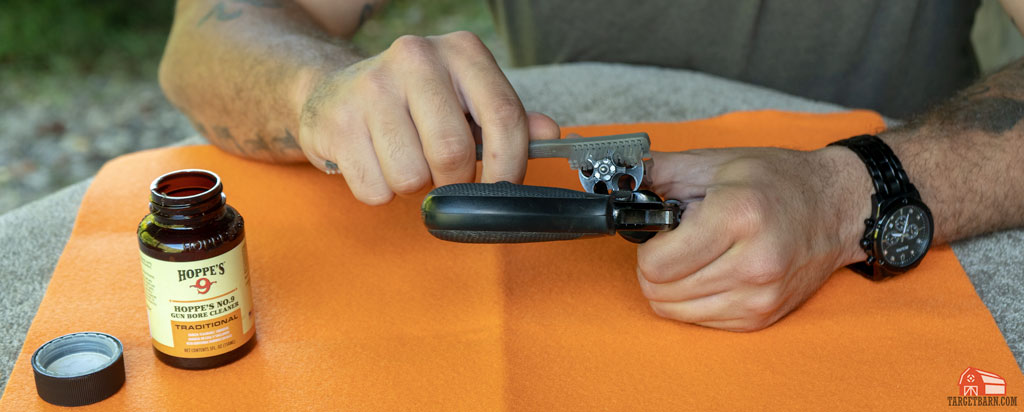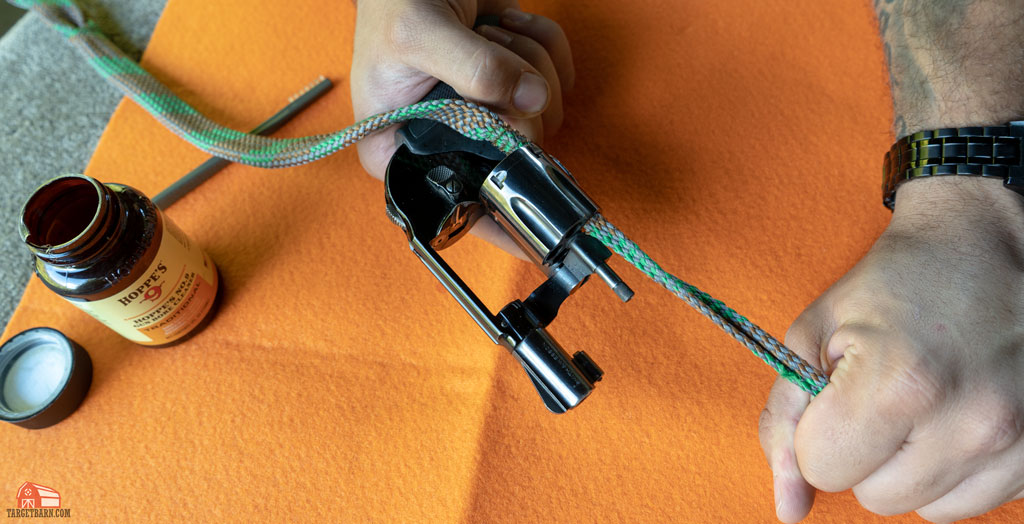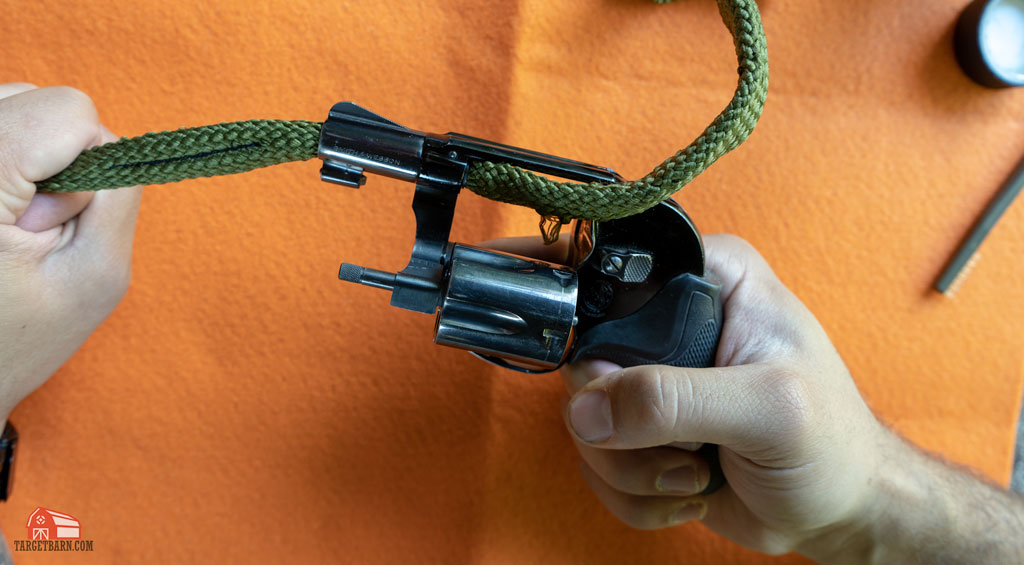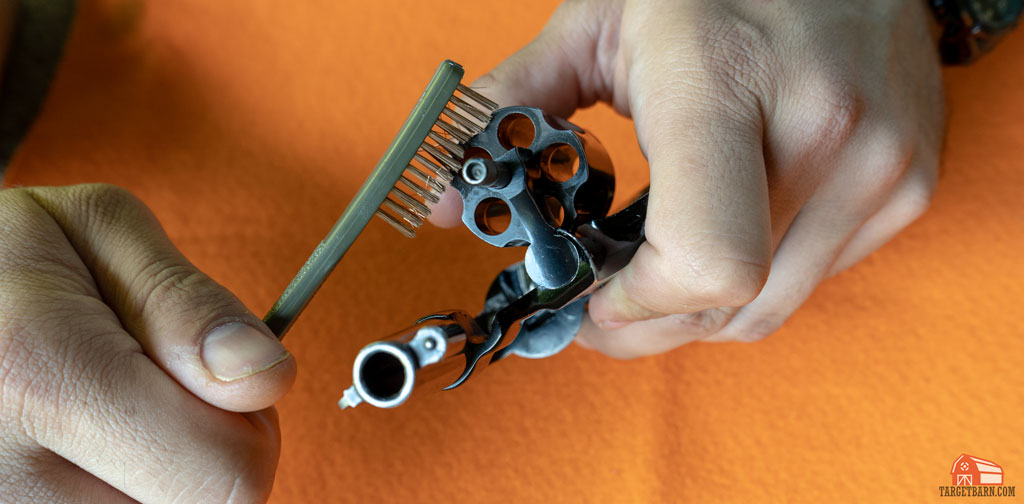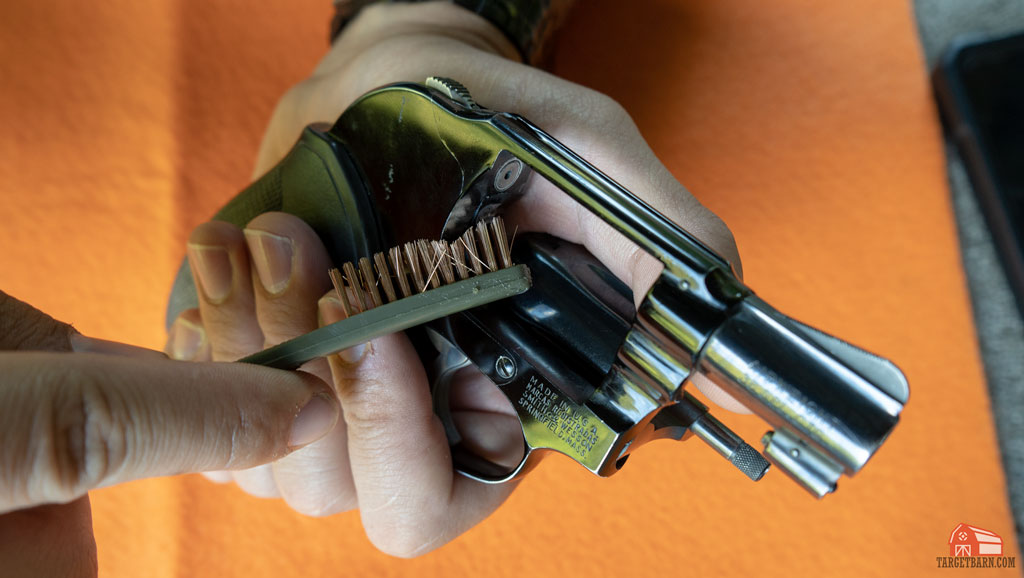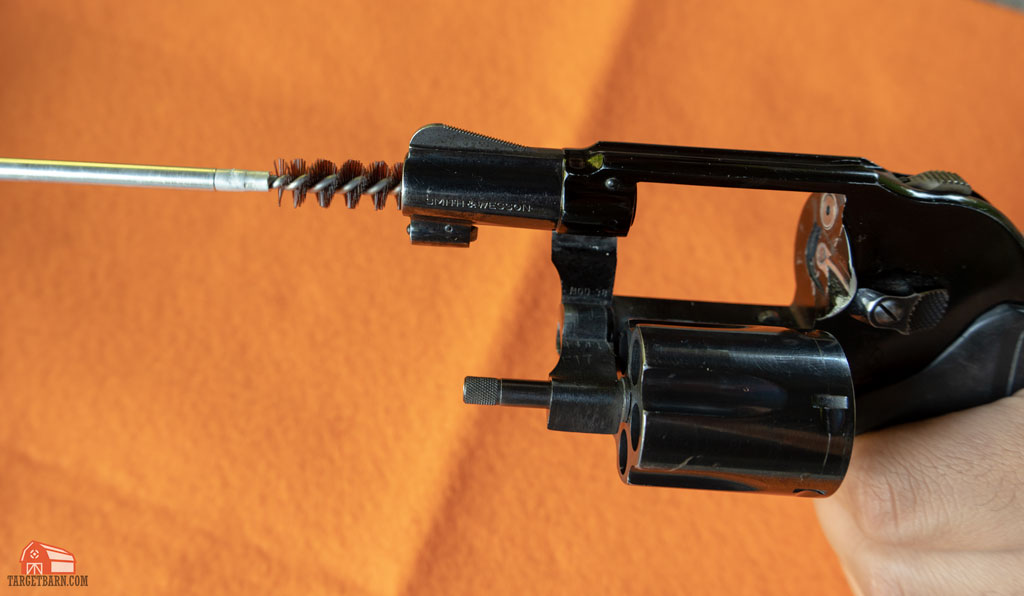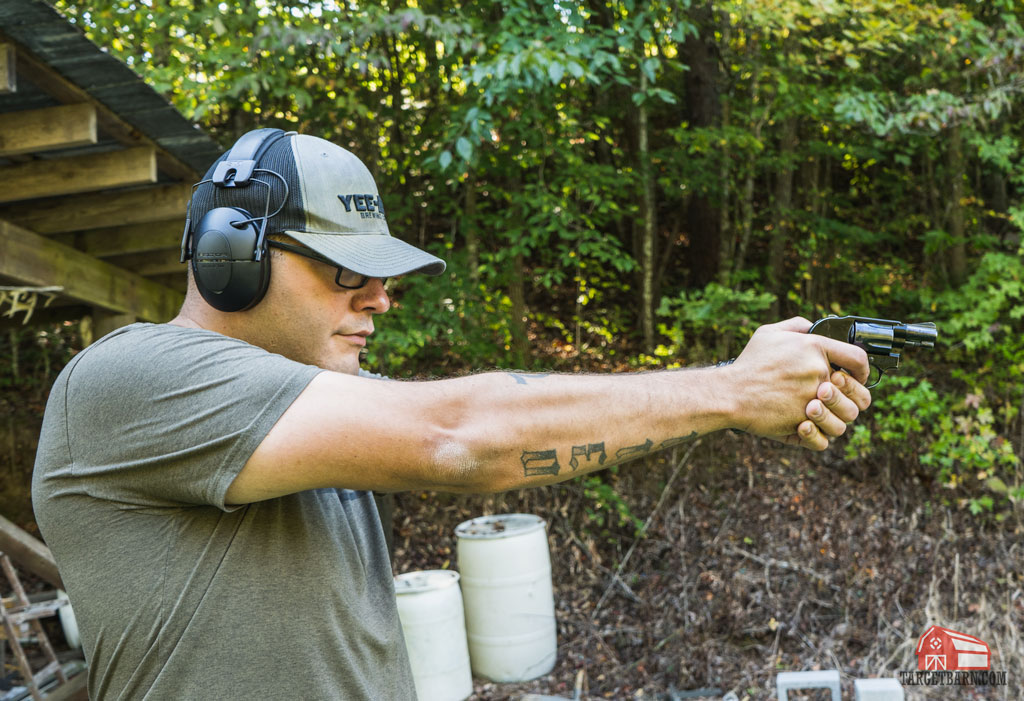“Revolvers are more reliable than semi-automatics.” That’s a saying I grew up with thanks to an old coffee table book at my parent’s house. I believed it, right up until I started shooting significant round counts out of both revolvers and semi-automatic pistols. Then I learned an important lesson: revolvers are more tolerant of neglect, and semi-autos are more tolerant of abuse. That’s why you need to know how to clean a revolver.
If you want shoot a semi-auto for 2,000 rounds and do nothing but drop a little lube on it, a quality gun from a reputable manufacturer will do that with no problems. If you try to do the same thing with a revolver, you have a much higher chance of running into a problem. The flip side is that you can load a well-made revolver and leave it in a sock drawer for 20 years, and it will still fire like it’s brand-new when it comes out. A semi-auto might not.
The most important thing you can do with a revolver to keep it shooting is to keep it clean. I’m not talking about a spotless, military inspection kind of clean. You also don’t need to turn into one of those dudes who cleans his gun after every range session either, and thank God for that.
So, what’s the best way to clean your revolver?
Cleaning Your Revolver
Personally, I have two types of cleaning I do with a revolver: the quick clean and the deep clean. I do the quick clean every couple of hundred rounds. I do the deep clean every 2,000 rounds. First let’s look at the quick clean, and I’ll break down how I do this, what supplies you’ll need, and why it’s important.
How to Clean a Revolver with a Bore Snake: Quick Clean
First, it’s important if you shoot a lot with a revolver because it hits all the problem areas needed to keep the gun running well.
To do this with a .38/.357 revolver you’ll need the following supplies:
- a nylon brush (like a toothbrush)
- a 9mm/.357 bore snake
- an old t-shirt
- some kind of cleaner
- a .40 S&W bore snake
1. Scrub under the extractor star
Step one, we’re going to hit the biggest problem area: under the extractor star. First make sure the gun is clear. Then, with the cylinder open, hold the extractor rod so that the star is up. Shoot some cleaner on the area under the star and scrub it with the brush. Then wipe it down with the t-shirt.
2. Run a bore snake through the charge holes
Next, put cleaner in the charge holes and run the .40 cal bore snake through each hole. Done. We use the .40 S&W bore snake because the charge holes are larger than a .357 shell for obvious reasons, and a .40 caliber bore snake does a great job of cleaning them.
3. Run a bore snake through the barrel
Last, put some cleaner in the barrel, and run the correct size bore snake down that a couple of times. You’re done with the quick clean!
You can also scale this idea up – for .40/10mm revolvers you need a .40 bore snake and a .45 bore snake, for .45 cal revolvers you need a .45 and a .50 caliber bore snake.
The thing to remember about the quick clean is it’s designed for someone who shoots primarily jacketed ammo or hard lead ammo. If you’re one of those dudes that casts old wheel weights into bullets or uses whatever junk lead you have lying around, it’s not going to work, and your barrel is going to get full of leading. Luckily for you, the deep clean works regardless of what kind of rounds you shoot.
How to Clean a Revolver: Deep Clean
You’re going to need some additional supplies:
- a lead and copper remover for the barrel
- a bronze brush (definitely not a toothbrush unless you like bloody gums)
- a bronze barrel brush
You can actually start your deep clean the same as the quick clean.
1. Clean the cylinder face with a bronze brush
This time after we clean the cylinder and before we get to the barrel, take that bronze brush and some cleaning fluid and go to town on the front of the cylinder.
Most of my cylinder faces are black as winter night in Alaska, because the carbon fouling that cakes on here after a lot of shooting is difficult to get off. It’s also a well-known fact I hate cleaning guns. When left unchecked, this carbon can cause problems with the free rotation of the cylinder, so it does need to be removed.
2. Clean the forcing cone and frame face with a bronze brush
Once that’s clean and the residue has been removed, take your bronze brush again and hit the forcing cone and the face of the frame. If you don’t know what those are, the forcing cone is the part of the barrel that sticks into the frame. The frame face is where the firing pin comes through. Get the crud off those bits!
3. Use lead and copper remover in muzzle
Now you’re going to take your lead and copper remover, dip your bronze barrel brush in it. CAREFULLY insert it in the muzzle. Make sure to be careful, because if you’re using a steel cleaning rod behind that bronze brush, you can damage your barrel crown, and then you’ll be sad. Oh and your gun won’t shoot as nice groups either. But mostly you’ll be sad.
Anyway, push the bronze brush through the barrel until it comes out the forcing cone. What I like to do is unthread it there, and pull the rod out. I then re-attach the brush, and push it through again. I do this three to five times, then run the bore snake through, then run clean dry patches through. That will get the barrel nice and clean.
Once you do the quick clean and add in the bronze brush steps, that’s a deep clean. Finish that up, wipe the surface down with a light film of oil, and you’re done. Your gun is now clean, and you can put it back into your safe for the next time you shoot.
How Often Should You Clean Your Revolver?
If you’re smart, you’ll keep track of how many rounds you fire through a specific gun on a spreadsheet. That way you’ll know when you reach 2,000 rounds and it’s time to do a real deep cleaning. You can do a deep cleaning any time you want. The only reason I don’t is because it’s time-consuming and also I hate cleaning guns.
Oh, and one last thing: you can’t hurt your gun by cleaning it too much. You can hurt it by banging steel rods into the barrel or cleaning it with cheap products. But cleaning it properly will never hurt it.

